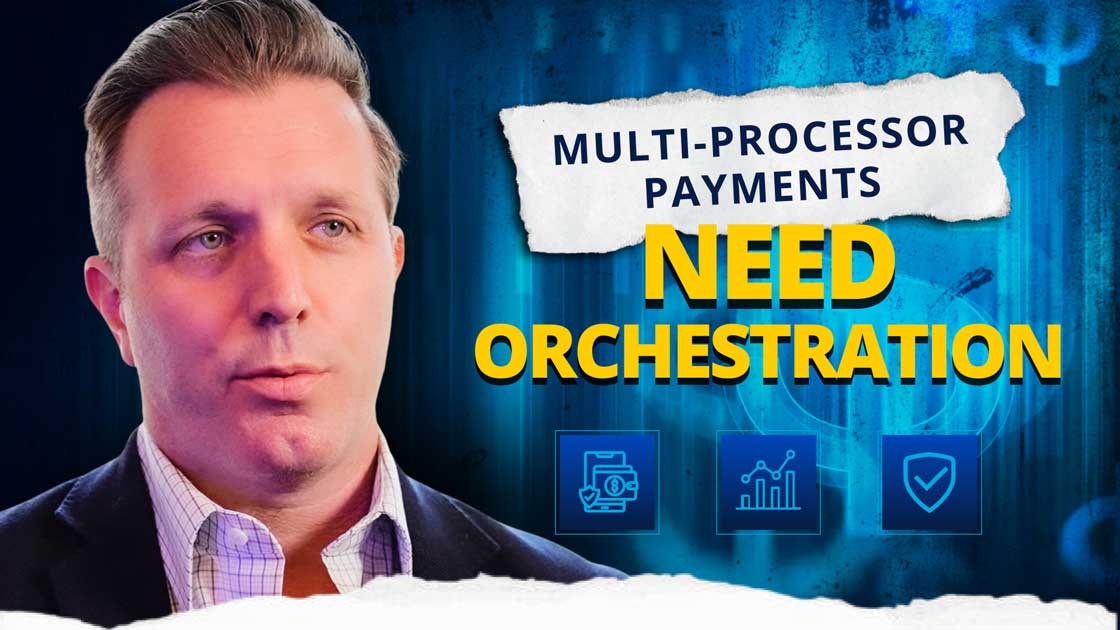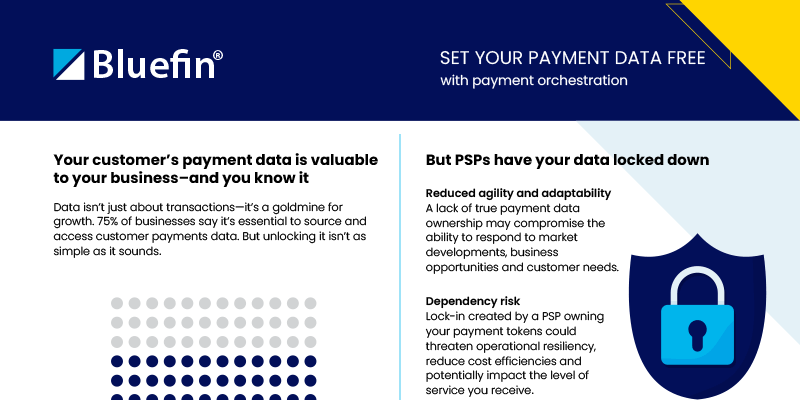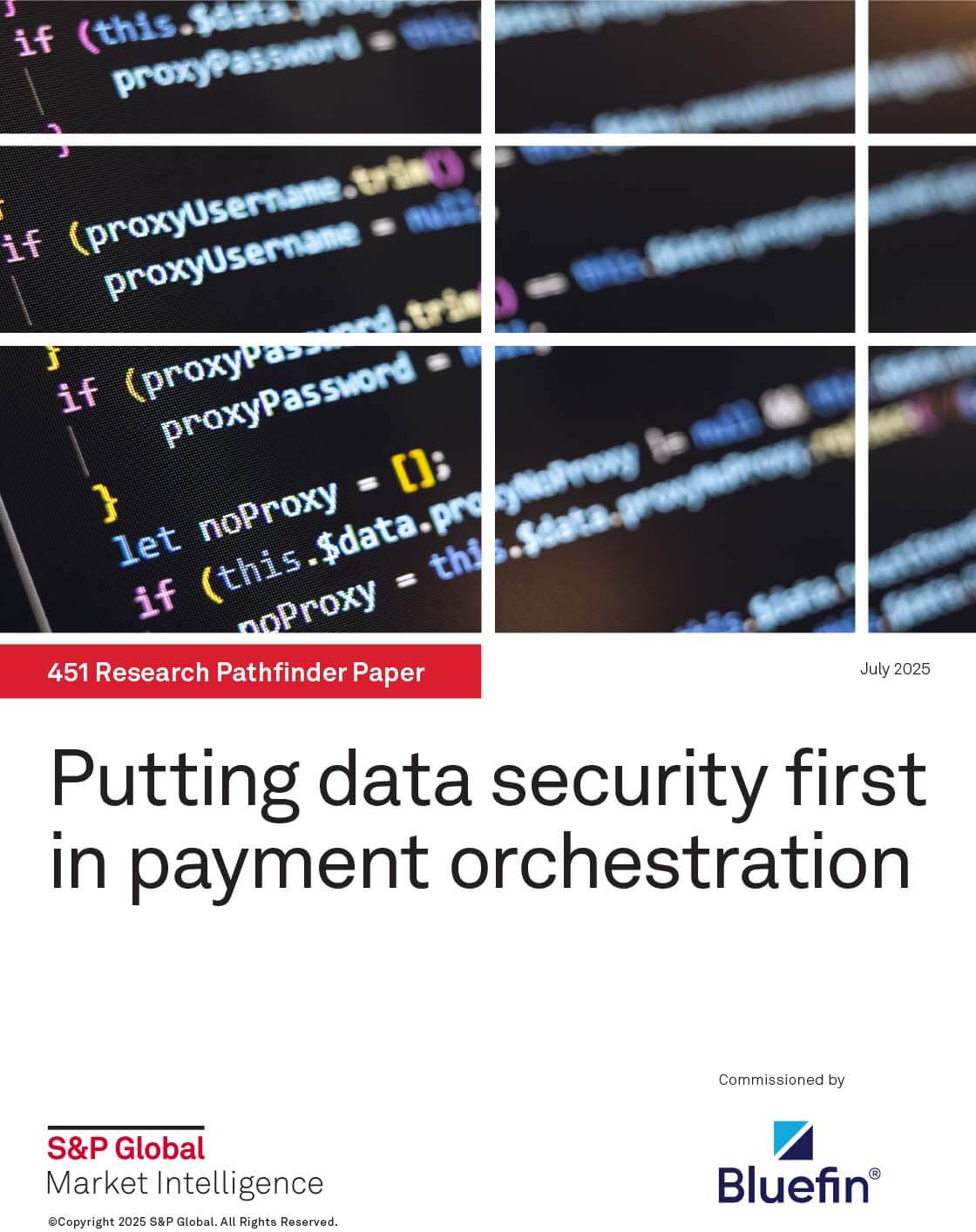The Challenge Retailers Face
Retailers operate in one of the most complex payment environments today. From in-store and mobile to eCommerce and call centers, every channel introduces risk. Traditional payment orchestration platforms often fall short – they’re built for eCommerce only, don’t support card-present transactions, and fail to secure sensitive data like personal identifiable information (PII), personal health information (PHI) and payment data.
The result? Retail payment security lags, with issues such as vendor lock-in, unprotected entry points, fragmented customer data, and high compliance costs, all while fraud and regulatory pressure continue to grow.
Omnichannel payment security through retail orchestration provides merchants a smarter way to manage payments by securing every entry point, unifying fragmented customer data, and eliminating vendor lock-in. With encryption and tokenization at its core, this approach reduces compliance scope and risk while giving retailers the flexibility to scale, switch providers, and innovate with confidence.
Bluefin’s Chief Revenue Officer, Drew Monroe, explains why more companies are adopting multi-processor payment strategies and how payment orchestration turns complexity into opportunity.
The Bluefin Solution: ShieldConex® Orchestration
That’s where ShieldConex Orchestration comes in: a purpose-built solution that applies these principles to the complex realities of modern retail. Built with PCI-validated P2PE, vaultless tokenization, and a cloud-native design, ShieldConex gives merchants full control over how they secure, route, and share payment and customer data.
Here’s how it works:
Protected Point of Entry: Data is encrypted the moment it enters through a POS terminal, mobile app, iFrame, or API with PCI-validated P2PE and vaultless tokenization in retail environments.
True Processor Freedom: Retailers control their tokens and can switch providers without costly detokenization fees.
Support for Every Transaction Type: Both in-store and eCommerce payments are supported across 120+ P2PE-enabled devices.
Unified Customer Identity: A universal token follows each customer across channels, connecting data into loyalty, CRM, and analytics platforms.
Built to Scale: A cloud-native architecture ensures low latency and global agility.
Lower Compliance Scope: ShieldConex enables retailers to streamline PCI DSS compliance, reducing scope by up to 90% while ensuring support for GDPR, CCPA, HIPAA, and NACHA.
Benefits for Retailers
By adopting ShieldConex, retailers can:
- Secure retail transactions across all channels with tokenization in retail and P2PE protection.
- Minimize compliance scope and reduce audit risk.
- Eliminate vendor lock-in while retaining control of customer data.
- Gain a unified view of customers to power loyalty and personalization.
- Scale faster without overhauling infrastructure.
In short, retail doesn’t need to get simpler – it needs to get smarter and safer. ShieldConex delivers both.
Check out some quick stats on how payment orchestration reduces complexity, increases flexibility, and provides freedom from vendor lock-in.
How Bluefin Can Help
Bluefin is a global leader in retail payment security. Specializing in PCI DSS compliance for retailers, we help secure billions of transactions annually with PCI-validated P2PE, vaultless tokenization, and advanced orchestration, reducing compliance scope by up to 90%.
Still have questions on why payment security is important in orchestration? Check out our FAQs below.
You can also download Bluefin’s whitepaper – Putting Data Security First in Payment Orchestration – and learn how vaultless tokenization and encryption empowers businesses to reduce vendor lock‑in, retain control of their payment data, and fuel global expansion.
Ready to protect your retail payments and customer data? Contact Bluefin today to learn how ShieldConex Orchestration can transform your approach to retail payment security.
Retail Payment Security FAQs
What are the most common security risks in retail payments?
Retailers face threats like card-not-present (CNP) fraud, data breaches, malware on POS systems, and phishing attacks that target employee or customer information.
How does point-to-point encryption (P2PE) protect retail transactions?
P2PE encrypts card data at the point of interaction and keeps it encrypted until it reaches a secure decryption environment, making it unreadable to fraudsters even if intercepted.
How does tokenization improve payment security in retail?
Tokenization replaces sensitive card data with non-sensitive tokens. Even if stolen, these tokens are useless to attackers, reducing risk and PCI DSS scope.
Can secure payment solutions help reduce chargebacks and fraud losses?
Yes. Solutions like P2PE, tokenization, and 3D Secure can reduce fraud risk and shift liability away from merchants, lowering the frequency and cost of chargebacks.










